Addicted to treats

Treats as primary reinforcer
Rewarding with treats is an essential component in our occupation with positive reinforcement. So, how quickly are our well-intended treats and cookies devaluated so to become little more than a form of inanimate currency in our mundane exchange of performance and entitlement? Working with high-quality treats also has its downsides if we take a closer look at what happens within our horses’ minds, and at the learned mechanism as well as the ancestral heritage that are triggered by us. Then, we may be able to distance ourselves a little more from this capitalist system of horse remuneration.
Rewarding with treats and clicker training go hand in hand
Treats per se are experienced in a positive way
Is this true according to our knowledge
gained from science and
experience?
The power of primary reinforcers
It is easy to get to the heart of clicker training: first comes the click, and then we hand over a treat, done. We want to work with rewards, and treats are perceived as reward by all of us all the time. Yet, is this simplified idea really true?
The choice of the right feed
Initially, many human trainers are not aware of how much their choice of specific treats and the way in which the treats are handed over influence the horse’s perception of stress, yet, there are many different stressors and potential sources of error. Many horses are overwhelmed by the quality of the treats and react in an overexcited and hectic manner.
Handing over the feed
Others have never learned to receive treats in a relaxed way, and some are even prevented by the human trainer from comprehending a certain lesson’s meaning who because the treat is handed over thoughtlessly so that the horse focuses on the treat alone. A better understanding of this mechanism can be gained if we deal a bit more closely with the process of rewarding with treats and handing over treats.
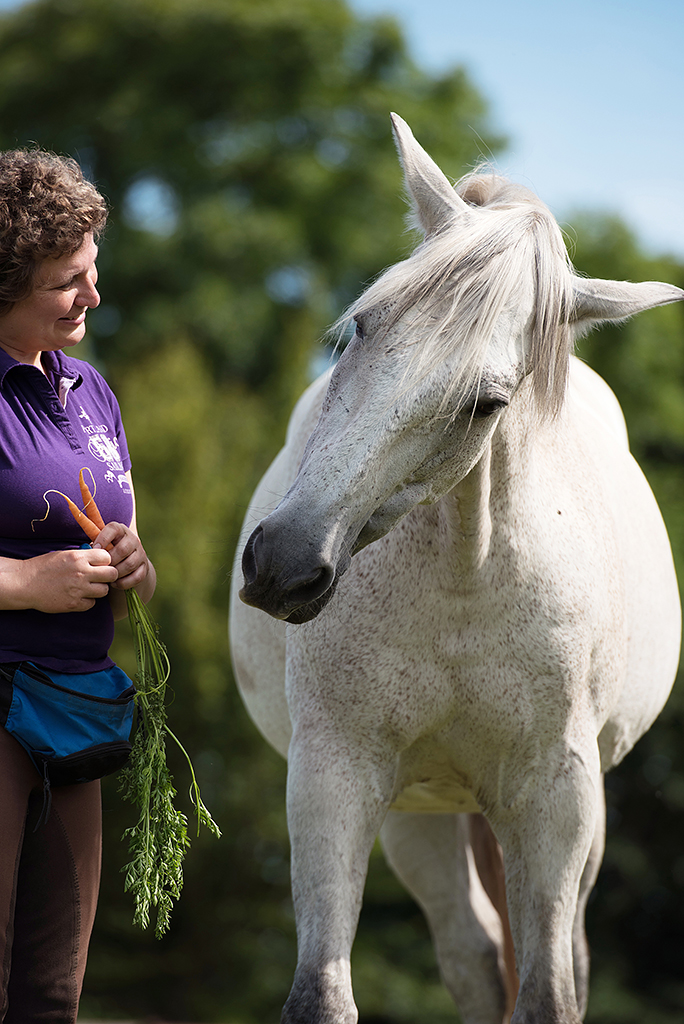
Sense and nonsense of rewarding with treats
It is not by accident that we use treats as rewards in positive horse training. Food is a primary reinforcer from the perspective of behavioral psychology. It satisfies one of the horse’s fundamental physiological needs and is based upon the millions of years old instinct to supply the body with nourishment. As a consequence, the horse’s willingness to perform a behavior that is perceived as leading to success more often in the future increases if this primeval impulse is satisfied. So, the horse does not need to learn to perceive food in a positive way but this knowledge is based in its nature.
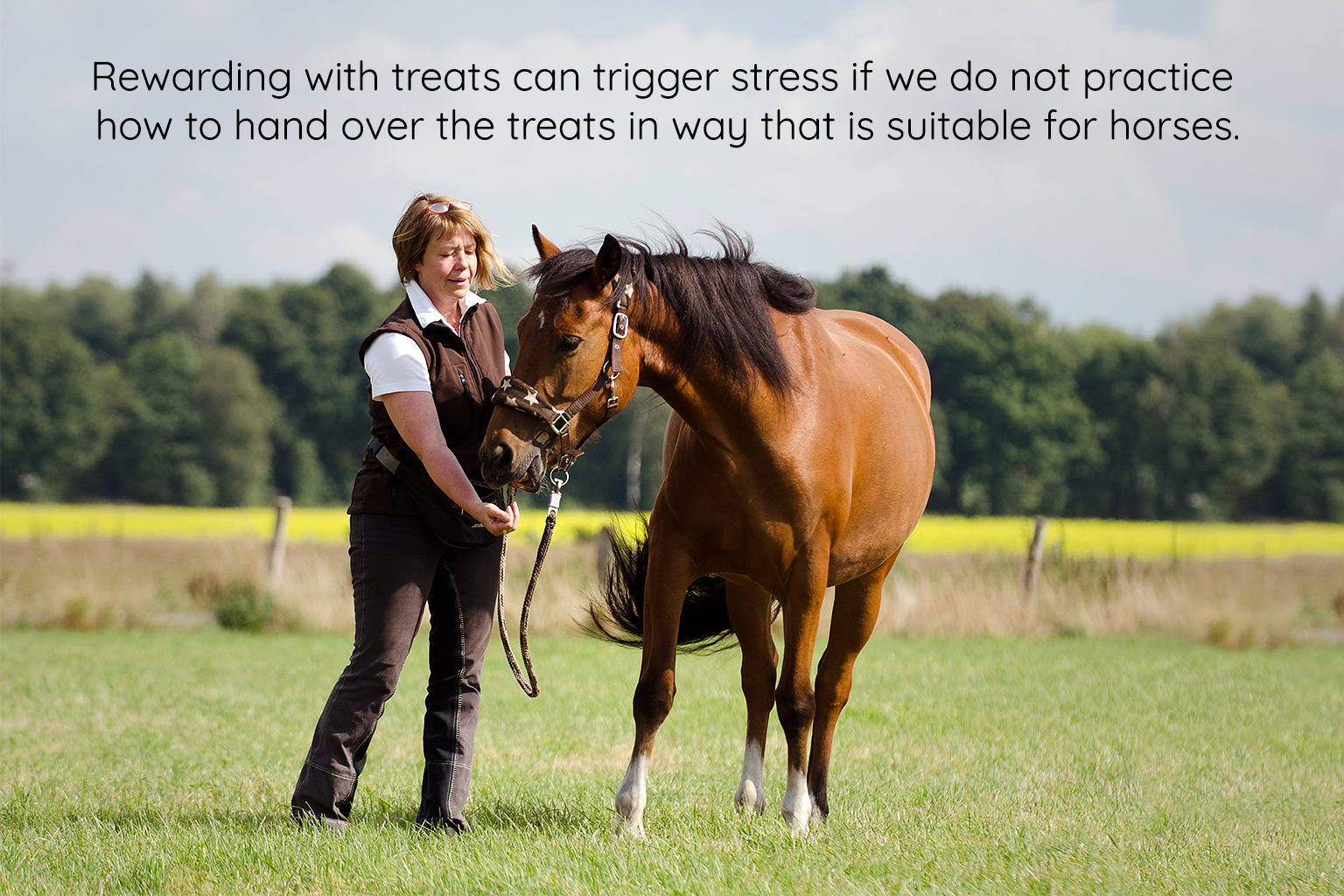
Tool or manipulation?
This evolutionary basic configuration of each and every animal makes food an enormously mighty tool we have at hand. In general, horses always show appetite because their whole lifestyle is directed towards continuously ingesting food. Accordingly, they quickly understand to distinguish the forms of behavior that lead to advantages when it comes to food. What is more, treats also offer advantages for the human training partner; it is handy, can be handed over directly and intentionally, and disappears in the act of consumption.
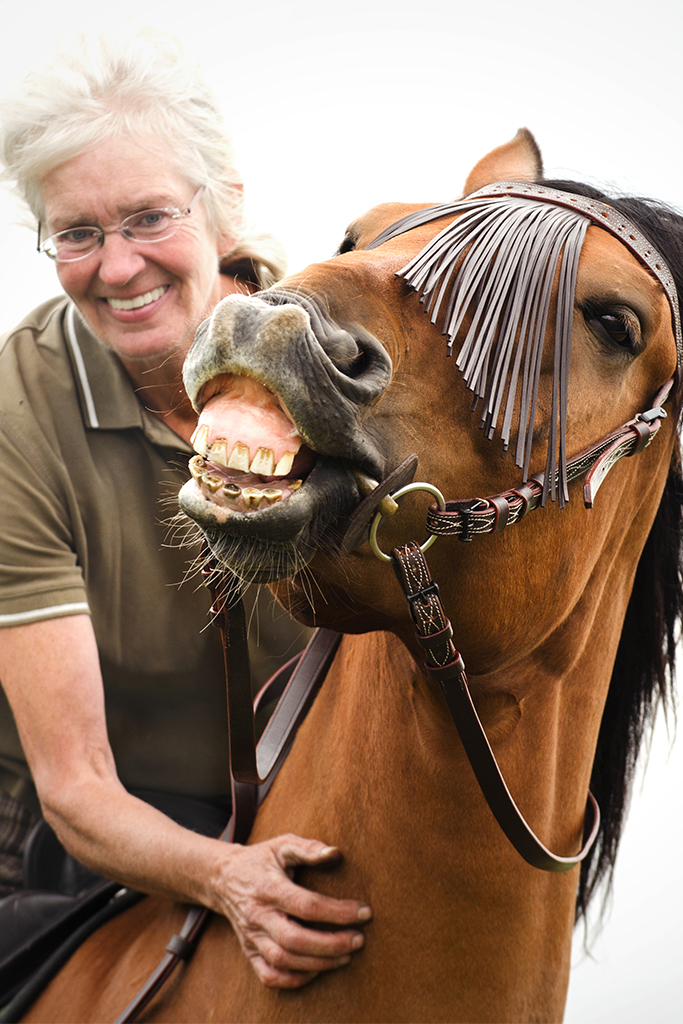
Guide skillfully
So, it can be used in a precise manner to train a specific behavioral response. Furthermore, our horse will not spend too much time with the reward, and we do not have to spend too much time to generate the rewarding effect, like we would have to do if we had chosen petting as reward for example.
Feeding or Petting
The positive feedback from grooming cannot be measured precisely, and grooming therefore can only be used in a limited fashion for quick and effective shaping processes. First, we have to find a suitable spot for grooming, one the horse really enjoys. We also have to be careful not to disappoint the horse because we stop grooming after a few seconds. From the perspective of learning theory, it is a negative form of punishment if we stop the grooming that is perceived as positive and pleasant. In other words, we take away something that is perceived as pleasant. This can even destroy the previously created rewarding effect under certain circumstances.
Is petting useful?
Of course, these arguments do not exclude grooming as possible form of reward at all; they only underline that it is not always possible to accurately include this form of reward into our learning process.
Treats as rewards and mindset
From this point of view, treats are ideal companions in our work; they can be accurately used in many different contexts. Yet from my point of view, it is exactly this guarantee of success and the targeting of a fundamental need necessary for survival that leads into the dark side of rewarding with treats: It easily misleads us into thinking that we can calculate everything by setting an equation; how much do we have to “pay” the horse so that it does as we wish.

Death by clicking?
The structured method of clicker training has a certain tendency to lead us in a problematic direction. It tempts us to cling to a model of payment that follows the model of our money system; certain behavioral responses have more value than others, costs and benefits are balanced like in accounting but the animal’s hidden emotional level is not appropriately considered.
Gifts from the heart
For me, treats as rewards are primarily presents I give with all my love. I do not want to measure their price each and every time I hand over a treat. According to my R+ mindset, food should generally be freely available.
Who learns nothing, cannot forget anything. Garfield
The horse’s nature
It is in the horse’s nature to receive food with very little effort, to not bend over backwards for every stretch of green or to pursue and hunt down the thistle. So, we must not link food and human presence with economic terms like performance, effort and advantage all the time when we are dealing with horses.
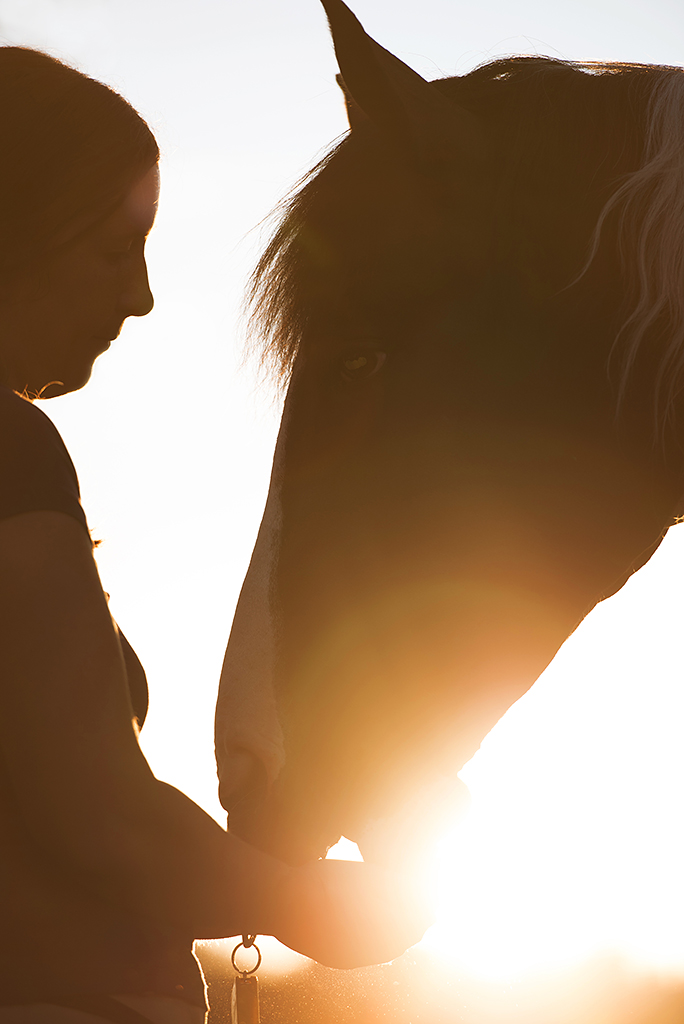
Treats to the power of ten thousand
In general, food is portrayed in an undifferentiated and unfiltered way, and as completely unproblematic by most clicker trainers. Yet, I do not want to hide my concern that we cannot know whether food is always perceived as “pleasant consequence” of the performed behavior by every horse and in every possible situation. Ultimately, as defined in horse ethology, a reinforcer is the consequence of a horse’s behavioral response that increases its likelihood of recurrence. Whether the reinforcer used in a specific situation is a positive or a negative reinforcer is ultimately decided by the trainee him- or herself, in our case, this is the horse.
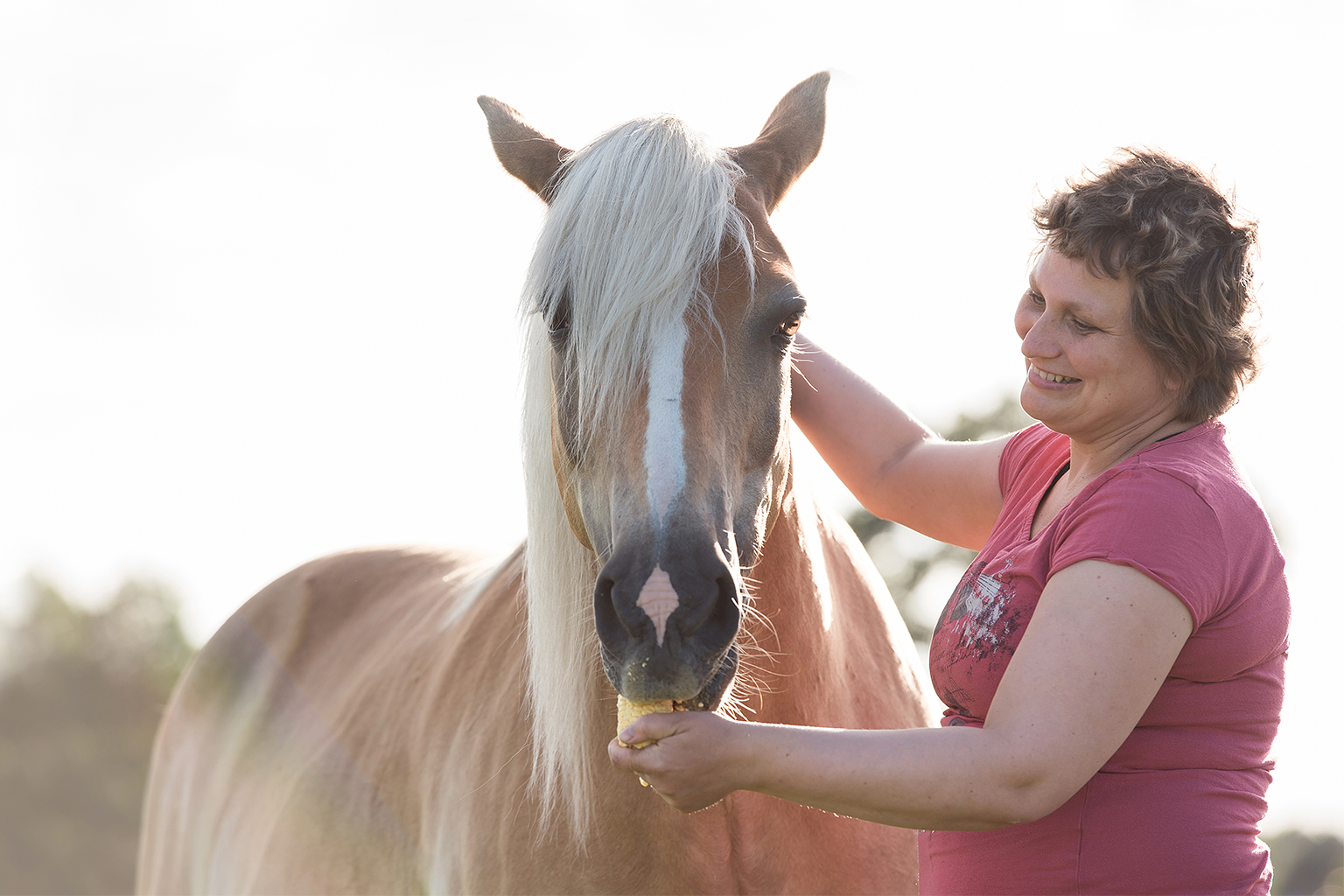
The circumstances’ impact
We often tend to generalize things that are pleasant for us, affection, nourishment or tender caress for example, as purely positive. Depending on the circumstances, however, this must not always be the case. Many of us will probably know from personal experience that food can be an ambivalent topic depending on the specific context. It might be nothing more than the urge to satisfy a fundamental need if one is really famished.
A matter of perception
Generally speaking, we aim to decrease our unpleasant sensation of hunger, and increase our well-being until we reach a certain feeling of fullness; we would not call this pleasure or indulgence. So, a single treat would be perceived as mockery by a very hungry horse, and would probably rather act as negative reinforcer instead of being a positive consequence. Similarly, a dearly loved piece of apple might not show its full effect, and be received with reluctance if the horse suffers from severe fullness. Every animal perceives food in a different way and forms different associations with food; this depends on the appetite, prior experiences in other training situations, and the quality of work.

The role of nutritional status
I know from experience and working with many different horses that we have to consider a couple of things if we want food to work as unproblematic positive reinforcer that enables a pleasant learning experience in horse training.
Sound feelings of hunger?
First of all, horses require species-appropriate husbandry and feeding; this sounds terribly trivial but is more often an issue than one might assume. An alarmingly high number of horses suffers from malnutrition, metabolic problems, or constantly fight excess weight. From my point of view, all these horses suffer from a distorted relationship with food, and do not enjoy their treats in silence and with calm satisfaction but frequently show a hectic, nervous or even aggressive reaction when offered food.
Satisfying existential needs
Too many horses experience very long breaks between meals in their daily routines, and therefore, show greed and little control when they are offered food in training. They want to reach the food as quickly as possible, and experience high levels of stress. For instance, many professional trainers use this mechanism to train animals in circuses, for movies or presentations at big shows; the animals have to work in training in exchange for all the food they require.
Strong incentive
So, it is assumed that motivation to solve a task is greater if the incentive is stronger which is rather questionable from an ethical point of view. Furthermore, I might be able to influence an animal’s behavior quickly in some situations but risk creating an uncomfortable atmosphere for the horse as well. From the perspective of evolutionary biology, horses are well established perpetual feeders. They require us to provide as much time for feeding as possible in their daily routines so that they continuously experience a feeling of satiety during the day. Only then, we can really work with them.
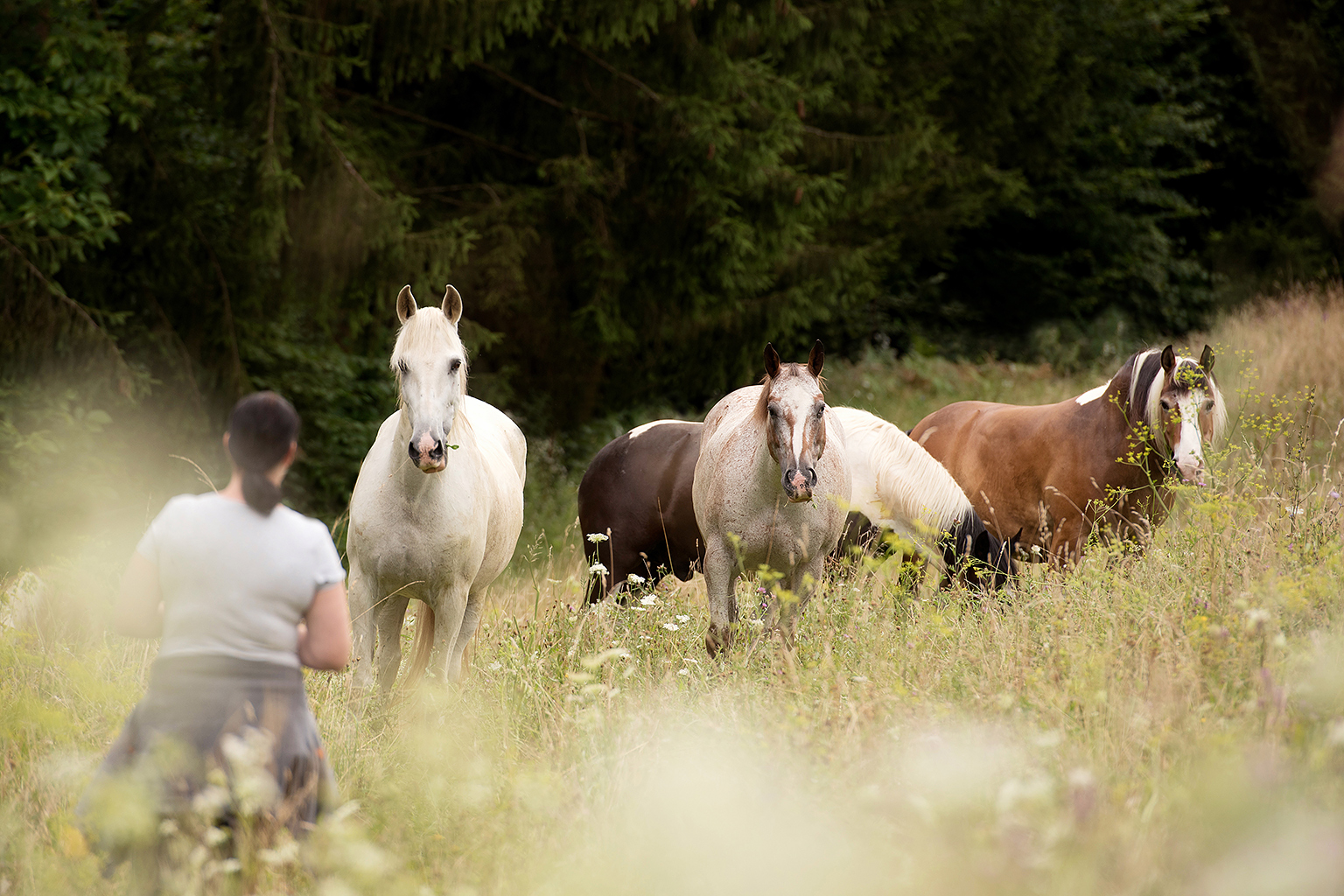
In two minds
Modern, automated feeding cannot guarantee perfect feeding because the individual times of feeding might be too short, and do not reflect the horse’s natural feeding cycle. What is more, this cycle differs from day to day. And even cautious horse lovers sometimes ration food with the best intentions first but thereby provoke conflict situations in training later. A rather ambivalent relationship with food is easily comprehensible if we add that we busy human beings frequently want to train with our horses exactly during feeding time; this leaves a couple of carrots standing against dinner with family.
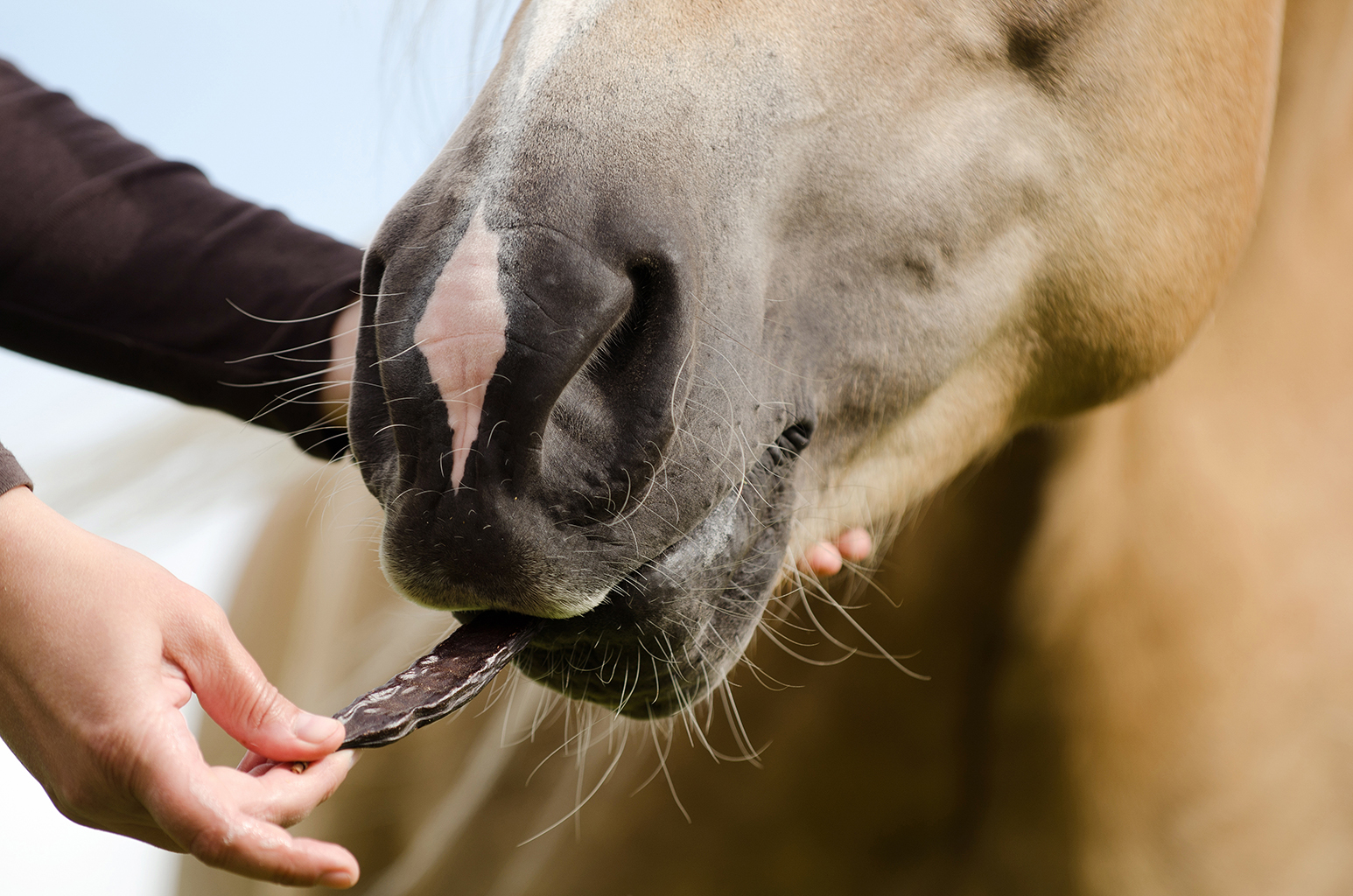
Just down your cereals?
Is it really always beneficial to use high quality, “better” food all the time in order to make my horse perform a certain behavioral response or to motivate it to keep demonstrating an exercise in a certain way and at a certain speed. When using food, when do we reach the critical point after which a horse is beside itself with excitement, and not able to focus on a task any longer?
Horses addicted to treats?
Many clicker trainers do not consider this information problematic; they assume that a feeding horse cannot experience stress, and value the importance of achieving a specific lesson higher than that of creating a calm atmosphere in training. Yet, the consequences of constantly giving high quality food as treats have not been fully explored so far.
Addictive behavior?
Industrially processed treats and cereals that contain additives like sugar, artificial flavors, and sweeteners, in particular, might probably cause similar problems in humans and animals alike. Regular consumptions can alter the cerebral metabolism over time, and might even lead to addictive behavior. Licking a single banana treat will not cause sugar addiction of course; but I want to highlight the mechanism we trigger if we constantly give treats in such an inconsiderate manner.
Special treats
Generally speaking, horses are perpetual feeders by nature but tend to ingest food that is high in fiber and low in sugar. High-quality food like sweet fruit or seeds containing oil is hardly ever found in nature or restricted to specific seasons. Such food triggers the brain’s reward system, and is a valuable nutritional addition for human and animal bodies.
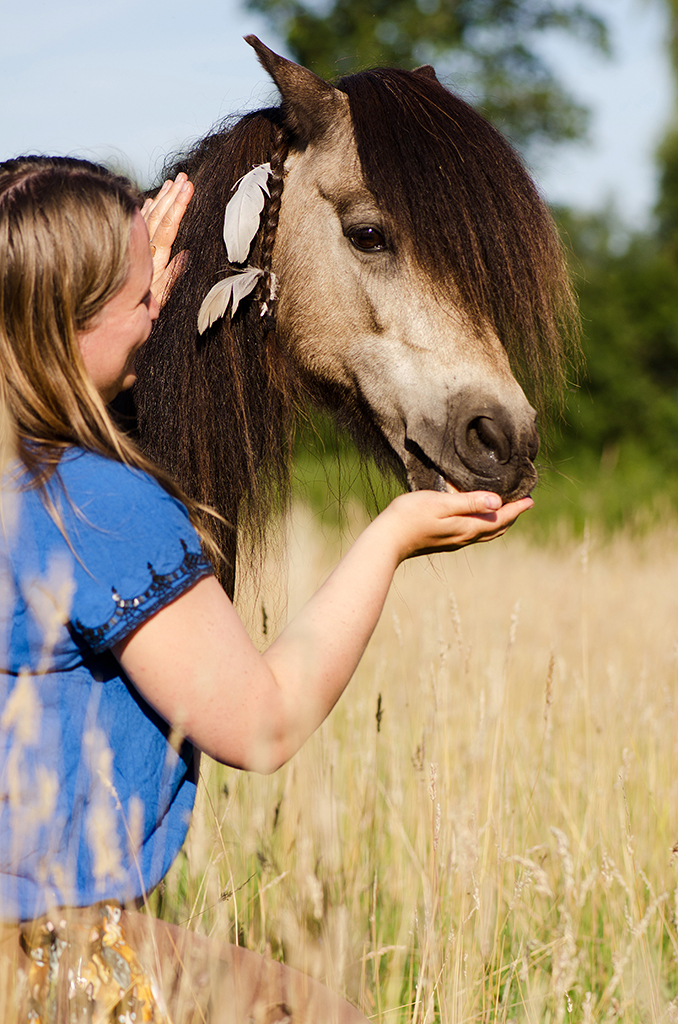
Brain boost
Sweet food, for instance, has a strong influence on the cerebral metabolism in order to motivate an organism to search for such a high-quality energy source. There are two mechanisms in the reward mechanism of a horse’s brain, and particularly in the nucleus accumbens, that are substantially influenced if we give treats.
Control center brain
First, there is a mechanism governing positive sensations and the pleasure of eating; actions like eating but also sex have been positively reinforced during the horses’ evolution because they are beneficial for personal fitness or the survival of the species. And the second functional range shows that the sugar we ingest does not only influence a horse’s body through the process of digestion but also reaches the brain through the body’s specific transportation systems.
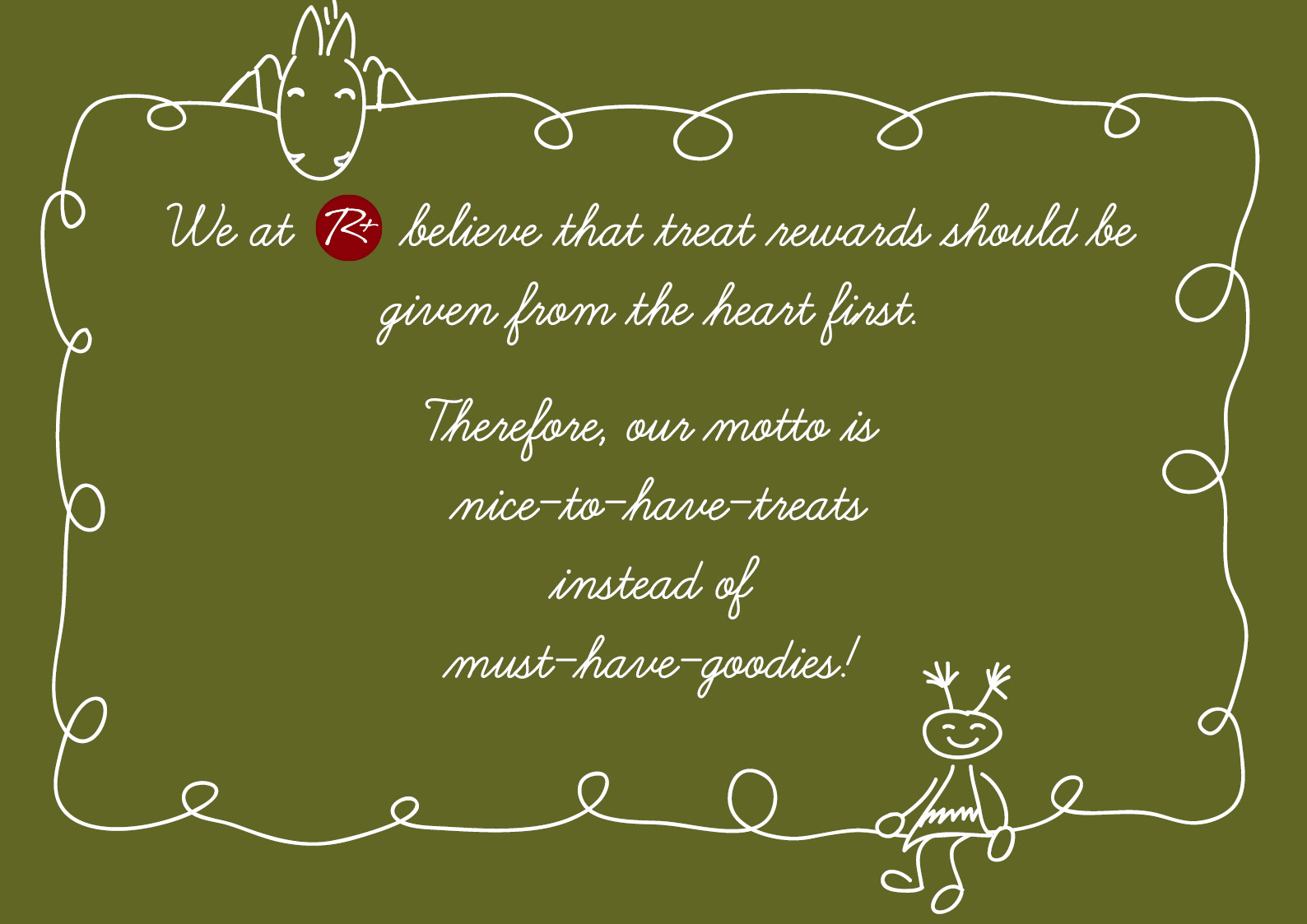
Sugar
So, sugar consumption, soft drinks for humans and treats for horses, quickly activates our brain’s reward system. It brings us sensations of pleasure but also a certain inclination towards increased pain tolerance, and compulsively searching for new opportunities to get more high-quality food. The incentive is so strong because sugar consumption activates the brain up to twenty times as much as the same amount of more common “natural” food would.
A pushing effect
In other words, using high-quality treats in clicker training also means deliberately tolerating that we use a mechanism that intensively pushes the brain’s reward system. This is influenced only by our choice of food and the more or less apparent amount of sugar it contains. Moreover, there is a trained form of attention and focus that is related to the marker signal and the work process that follows in clicker training. So all in all, we artificially create excitement in our horses, and they in return are motivated to want more of it.
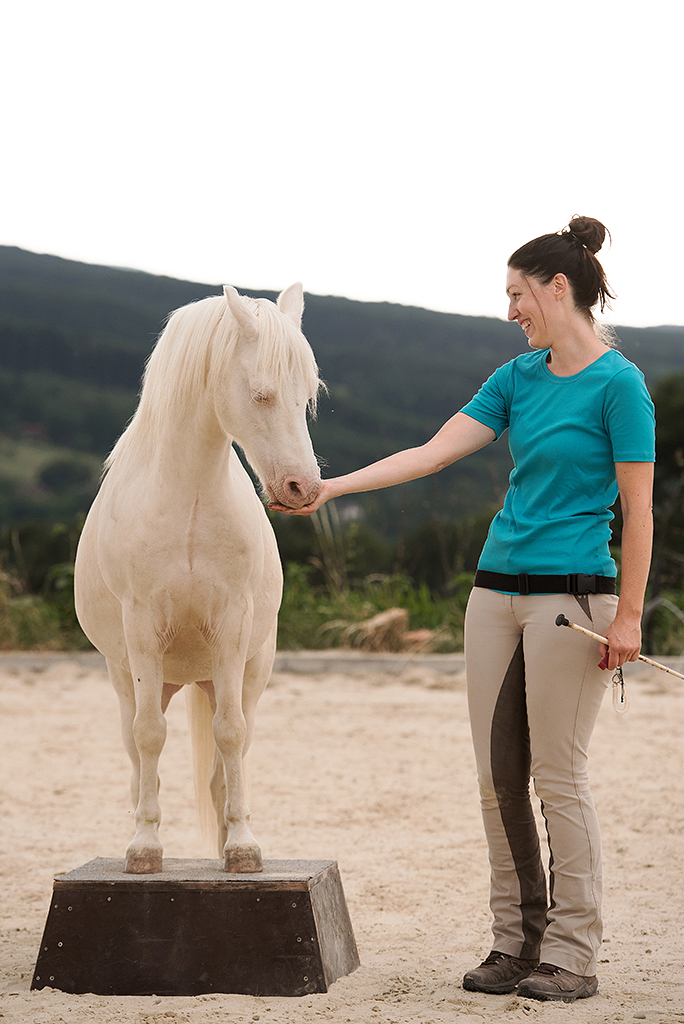
Systematically increased performance?
In the end, this leads to the question whether we really want to aim for gaining ever more control over our horse in order to achieve ever higher performance.
Unconditional affection?
This “obsession” with the specialty of high-quality literally forces some clicker teams to further and further optimize their “business” relation; in the end, the sheet needs to be balanced, and the cost-of-materials-ratio/treat as well as the profit/lesson both need to pay off. In my opinion, it is an alarming signal if we deliberately enter a system with our horse in which any form of togetherness is characterized by remuneration, prompt execution of tasks, and the never-questioned hierarchy between treat givers and treat receivers.
The rewarding effect
I do not want to demonize specific kinds of food but I would rather like to point out once more that we should choose our treats wisely; we aim for the rewarding effect a treat provides because it is distinct from everyday hay and something “special”, yet, we do not want that a treat stimulates a horse’s brain so much more intensely than unadulterated food ever could. For example, hay cobs that can be fed in dry form, grass we pick up in spring, and dried rosehips tend to be better treats than industrially processed cereals and similar food. Of course, it is the dose that makes the poison, here as well.
Regarding feeding methods
From my point of view, it is essential that our horses come to perceive food in a relaxed way as “nice to have”, and do not get excited by us to search for the next treat and sweet kick. We can frequently find a first clue if we observe how a horse takes a treat: Which ones are the treats that excite the horse and make it nervous or restless? So, we should question whether there might be an excessive amount of sugar at play if our horse keeps requiring courtesy lessons every time we use our ordinary method of handing over a treat.
Saliva as stress indicator
Many stressed horses suffer from a very dry mouth or increased salivation, and it might even be that due to an increased release of adrenaline saliva drops like a liquid from the horse’s mouth. So, it can be a valuable warning signal if your hands are already wet after handing over only a couple of treats in training.
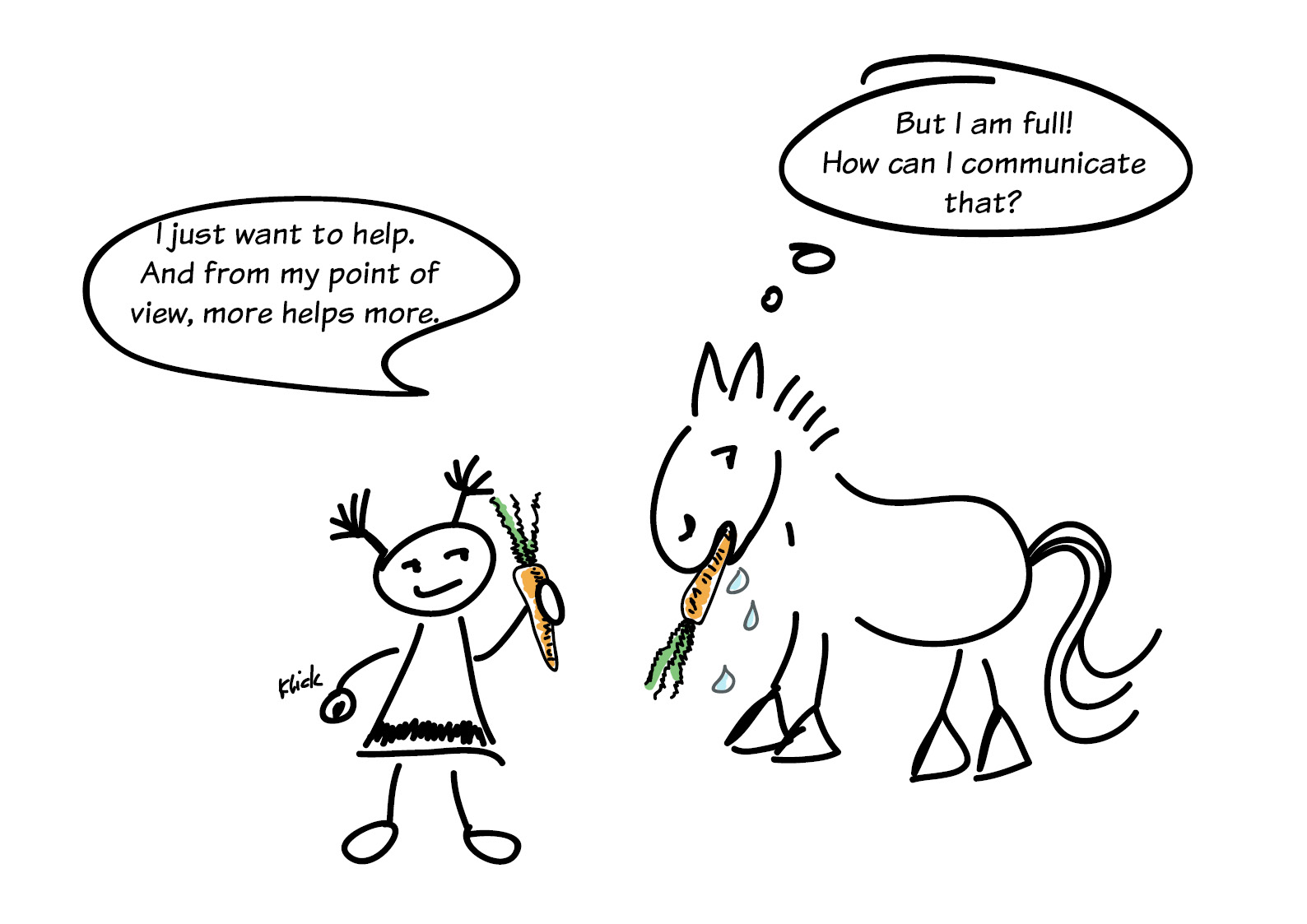
Our responsibility
We carry a lot of responsibility towards our horse if we want to use food in training. It is in our hands to do this in a way that benefits our horse, and to not hide behind the broad “positive” generalization. So, I try to be aware at all times that with this unusual treat I consciously bring something strongly reinforced into our togetherness. I introduce something that can come between us sometimes, and that can distract from our actual communication; something that would not be there if I would enter into communication with my horse only by the means of my body, my hands, and my voice.
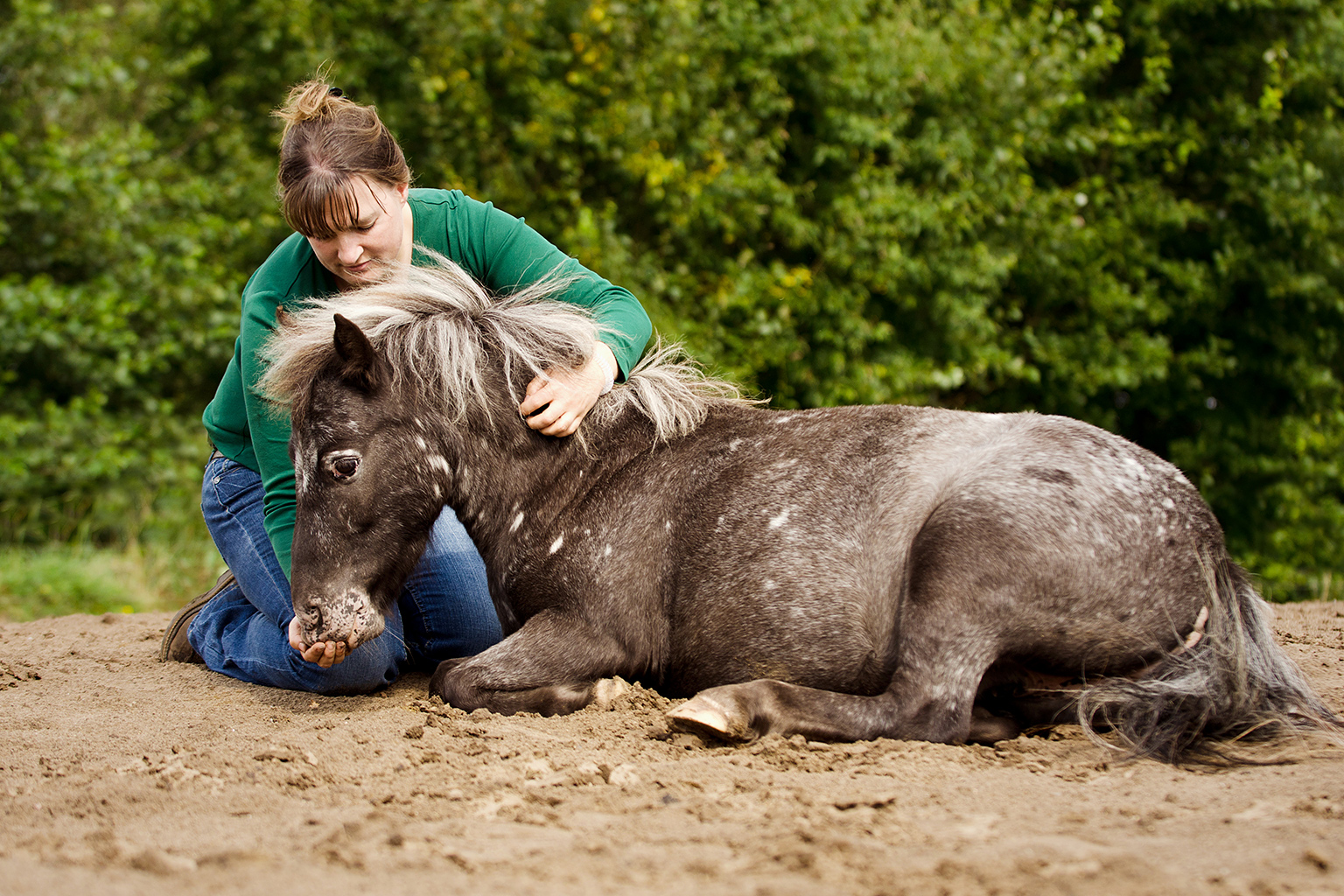
Means to an end
In my opinion, food is a means to an end, and I want to use it as cautiously as possible. So, it is also in the eyes of the beholder whether a well-intentioned action is perceived by our opposite without reservation and in a positive manner. We should therefore always reflect our role and responsibility so that no situations arise like in the scenes we can observe in zoos: The visitors are throwing peanuts at our relatives, and are having fun. The inhabitants “Rock Ape”, however, probably perceive the same situation rather as struggle for survival.
Marlitt Wendt & Conny Ranz


